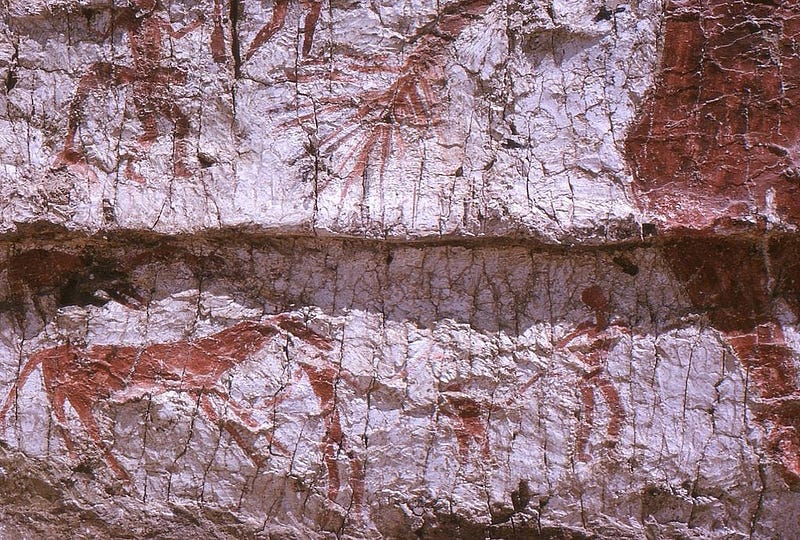# The Intersection of Heaven and Hell: Çatalhöyük's Legacy
Written on
Chapter 1: Discovery of Çatalhöyük
On a brisk day in November 1958, archaeologist James Mellaart ventured to a mound near Konya on Turkey's Anatolian plateau. Spanning 450 meters and covering 32 acres, this site held the promise of significant archaeological findings.
Between 1961 and 1966, Mellaart led excavations that unveiled a remarkable human settlement. The rectangular, mud-brick homes were arranged in geometric patterns, resembling the remnants of an ancient urban environment. The site featured painted walls, bull skulls, human burials, and fertility figurines.
Was a Lost Civilization Unearthed?
With extensive expertise in Neolithic studies, Mellaart identified this site as a commune from the Neolithic era. However, the scale of the "city" sparked skepticism regarding the capabilities of Stone Age people to construct such a complex urban habitat. These doubts were put to rest when archaeologists determined the settlement's age.
This mound, which Mellaart discovered, was named Çatalhöyük (pronounced Chatal-Huyuk). It stands as one of the earliest and largest proto-cities recorded in human history.
Chapter 2: A Neolithic Enigma

Imagine living in a time when independent thought was absent, and rituals dictated every facet of existence. In this world, bulls, vultures, and voluptuous female figures reigned supreme, all while guardians looked on. You kneel before a wall adorned with a face and oversized breasts, where skulls of foxes and vultures seem to gaze back at you.
This idol, central to a fertility cult, evokes feelings of desecration rather than reverence for motherhood. From childhood, individuals are indoctrinated into blind adherence to traditions, dedicating their lives to ensure their continuation. Welcome to the Neolithic nightmare of Çatalhöyük.
In After the Ice, noted archaeologist Steven Mithen describes Çatalhöyük as an earthly “hell.” Its inhabitants were compelled to follow rituals that dictated their destinies, stifling any spark of independent thinking.
Despite Mithen's bleak portrayal, Çatalhöyük appears surprisingly modern for its time, marking one of humanity's initial strides toward urban development. The tightly clustered rectangular homes, all of similar size, define the settlement's landscape. Without streets connecting the houses, residents traversed rooftops using ladders to move between them.
The settlement began around 7500 BC, close to Konya, and by 7000 BC had evolved into a significant proto-city, potentially housing up to 10,000 people. Archaeological findings reveal that these homes were constructed from mud-brick and featured individual cooking hearths. Remarkably, the residents maintained cleanliness, disposing of waste—including animal remains and plant debris—in an organized manner, often burying their deceased beneath their homes.
Excavations have also unearthed various obsidian tools, indicating that the inhabitants engaged in trade with nearby communities.
Chapter 3: An Archaeologist's Paradise

While you might disagree with Mithen’s assertion of Çatalhöyük as a Neolithic hell, its archaeological significance cannot be overstated. The site boasts remarkably preserved walls, intact plasters, fireplaces, wall slots for ladders, grain storage, and burial sites.
Such preservation makes it a treasure trove for archaeologists, revealing secrets from the past that enhance our comprehension of Neolithic life. The settlement operated on an agricultural economy, cultivating cereals and domesticating cattle, sheep, and goats. Recent research suggests that the inhabitants relied more on wild grains, plants, legumes, and game meat, like deer, than previously thought.
This shift illustrates a transition from a hunter-gatherer lifestyle to agriculture, although hunting remained vital. The community also gathered nuts from nearby hills.
What Was Society Like?
Çatalhöyük lacked a clear social hierarchy. The uniformity in home sizes suggests the absence of centralized authority, such as a palace for governance. However, this doesn't imply that all individuals were equal; some may have held more influence than others. Overall, it appears that Çatalhöyük was a relatively egalitarian society.
The site is also notable for its wealth of female figurines and mural art, some of which may hold religious significance. A few figurines are thought to be linked to fertility, with one particularly iconic representation of a seated woman often associated with a mother goddess.
Does this imply that the society was matriarchal? Opinions vary. Ian Hodder, a leading archaeologist from the University of Cambridge who has been studying Çatalhöyük since 1993, argues that while the idea of a mother goddess is prevalent, evidence supporting a matriarchal structure is minimal.
Less than 5% of the figurines unearthed are female, with the majority depicting animals. Thus, the notion of a matriarchal society centered around the worship of a mother goddess remains contentious.
Around 5700 BC, the people of Çatalhöyük vacated the settlement for reasons that remain elusive. Recent studies propose that climate change may have played a significant role in its decline, although further research is needed to substantiate this theory.
The remarkable rise of Çatalhöyük laid the groundwork for future city-states in the Fertile Crescent, where humanity would embark on new endeavors, constructing cities that would endure for millennia. Some, like Jericho, continue to be inhabited today.
For a long time, Çatalhöyük was heralded as the earliest known proto-city. However, the discovery of Göbekli Tepe has shifted this perspective.
If you're interested in learning how Göbekli Tepe reshaped our understanding of human evolution, check out the linked story below.
An Ancient Temple Suggests Religion Predated Farming by Several Centuries
Why did ancient humans prioritize organized religion over food security?